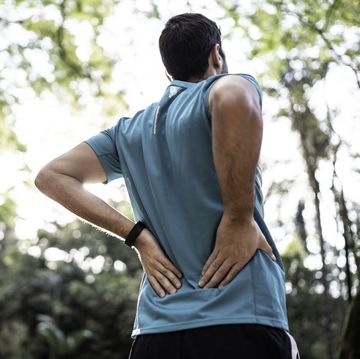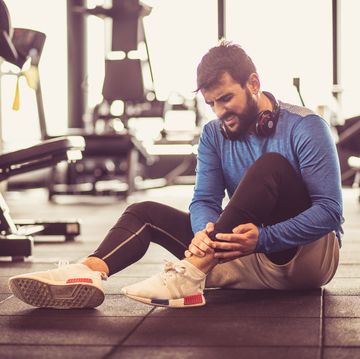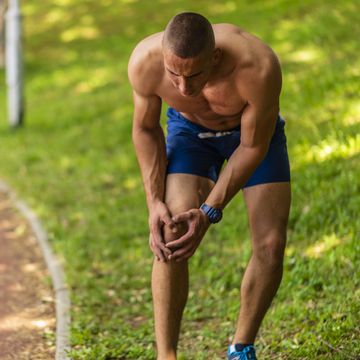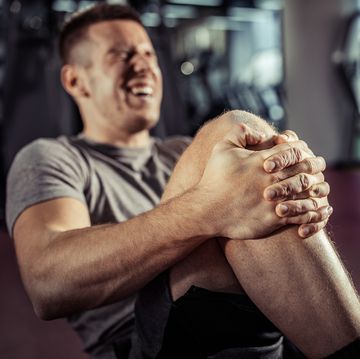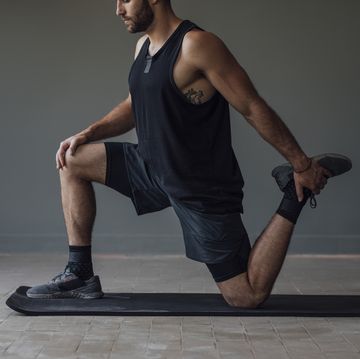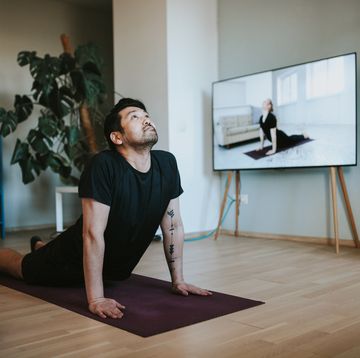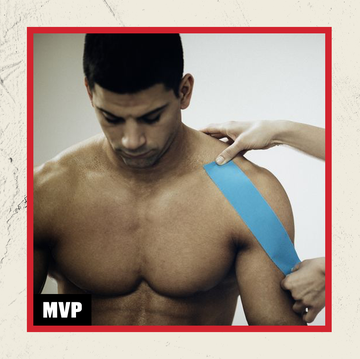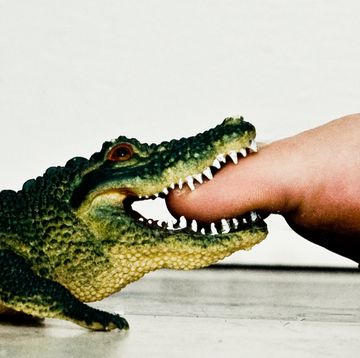Your Personal PT, Rachel Tavel, is a Doctor of Physical Therapy (DPT) and Certified Strength and Conditioning Specialist (CSCS), so she knows how to get your body back on track when it's out of line. In this weekly series, she gives you tips on how to feel better, get stronger, and train smarter.
You use your elbows constantly, but you probably don’t think much about how the joint works unless there’s pain.
Elbow pain usually develops over time and after repetitive movements that stress the joint. The most common symptoms are pain at either the inner or outer part of the elbow. The epicondyles are protuberances of the bone where this pain often presents. Multiple muscles that control the wrist attach at these bony prominences contributing to inflammation, or tendinopathies, at the point where the tendons attach to the bone.
No matter how you break it down, elbow pain is not fun. The elbow is a complex hinge joint formed between the humerus, radius and ulna—the three bones that make up the arm. Despite being relatively small, you have nine important muscles that cross this joint, and if you’re using your arms and hands frequently during the day, you’re using those muscles a ton.
Depending on what type of movements you do the most, you can affect one side of the elbow more than the other. The medial epicondyle is located closer to your body and is an attachment point for the wrist flexors. Pain and inflammation at this location is called medial epicondylitis, and is often referred to as “golfer’s elbow.” The lateral epicondyle is located at the outer prominence of the elbow. Pain and inflammation at this point is referred to as lateral epicondylitis and is often referred to as “tennis elbow.” The names are based on the repetitive movement patterns and loading of the forearm musculature required by each sport—but you don't need to pick up a club or racket to experience either malady.
Anything from holding a baby to throwing a football or even repeated typing and texting with poor body mechanics can lead to nagging elbow pain. So you may want to take a break from swiping, throwing, swinging, and lifting if pain begins to develop at either of these points, and do something about it before pain gets worse.
Your Move
Get some relief from the overuse syndrome by temporarily stopping the repetitive motions that aggravated the elbow in the first place. You may want a skilled practitioner such as a physical therapist to help with soft tissue release in the affected musculature. Massage, instrument assisted soft tissue mobilization devices, and even some braces can be effective for early pain-relief.
While you’re working to reduce inflammation, make sure you stretch the forearm muscles and strengthen the larger scapular stabilization muscles such as the lats, serratus anterior, traps, and rotator cuff. Often times weakness starts closer to your shoulder girdle. Weakness in these larger muscles can often lead to overuse, stress, and fatigue of the small muscles in your wrist.


